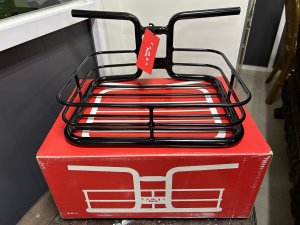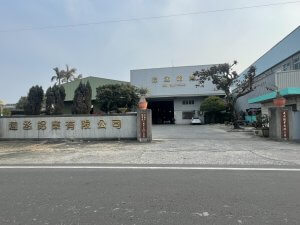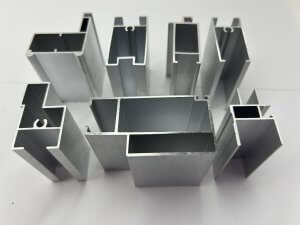What Are the Manufacturing Processes and Effects of Aluminum Extrusion Heat Sink Processing?
Aluminum extrusion 【heat sinks】, known for their excellent thermal conductivity, superior processing flexibility, and lightweight characteristics, have become indispensable components in modern industrial and electronic equipment. From cooling electronic devices and managing LED lighting heat to controlling industrial equipment temperatures, aluminum extrusion heat sinks play a critical role. This article explores the manufacturing processes and actual applications of aluminum extrusion heat sink processing, focusing on its key strengths: “excellent thermal conductivity,” “CNC drilling and cutting,” and “heat dissipation design.” We aim to provide a comprehensive analysis of its technical value and application potential.
The Thermal Performance and Material Advantages of Aluminum Extrusion Heat Sinks
Thanks to its unique physical properties, such as high thermal conductivity and excellent heat dissipation, aluminum has become the material of choice for manufacturing heat sinks. Through advanced processing techniques, these properties are further amplified in aluminum extrusion heat sinks, ensuring stable thermal performance.
The superior thermal performance of aluminum allows heat sinks to quickly transfer heat from the source to the surrounding air, even in high-temperature environments. Additionally, aluminum’s lightweight and easy-to-process characteristics provide manufacturers with design flexibility and cost efficiency.
-
High Thermal Conductivity for Efficient Heat Dissipation:
Aluminum has a thermal conductivity of 205 W/m·K, over four times that of standard steel. This allows aluminum extrusion heat sinks to quickly transfer heat across a larger surface area, reducing local heat accumulation and prolonging equipment lifespan.
-
Material Properties for Design Versatility:
Aluminum not only offers excellent thermal performance but is also corrosion-resistant and oxidation-resistant, making it suitable for harsh industrial environments. Its strong ductility makes it ideal for extrusion, enabling complex structural designs.
-
Lightweight for Increased Applicability:
Compared to other metals like copper, aluminum has a density of only 2.7 g/cm³, significantly reducing the overall weight of the heat sink. This makes it suitable for applications requiring lightweight components, such as electric vehicles and drones.
How CNC Drilling and Cutting Technology Enhances Precision in Aluminum Extrusion Heat Sink Processing
In modern aluminum extrusion heat sink processing, CNC drilling and cutting technology is indispensable due to its advantages in precision and efficiency. This technology not only meets complex structural requirements but also ensures product consistency and stability.
CNC (Computer Numerical Control) technology allows precise machining of aluminum extrusion heat sinks, including drilling, milling, and cutting. This capability enhances the performance of heat sinks and broadens their applications to diverse fields.
-
High Precision for Complex Structures:
CNC drilling and cutting technology achieves machining precision of up to ±0.05mm, ensuring every heat sink perfectly matches design specifications. This is especially crucial for heat sinks requiring precise connections.
-
Versatility in Design Applications:
Whether creating multi-hole designs or heat sink structures for specific purposes, CNC technology supports high-speed cutting and automated processes, reducing production cycles and costs.
-
Consistency and Stability:
Automated CNC processing minimizes human errors, ensuring consistent quality standards across every batch of heat sinks. This makes it ideal for industries requiring large-scale production.
How Optimized Heat Dissipation Design Enhances the Performance of Aluminum Extrusion Heat Sinks
The design of aluminum extrusion heat sinks plays a vital role in achieving thermal management goals. By optimizing the heat dissipation structure, these heat sinks significantly improve efficiency and meet various equipment requirements.
Effective heat dissipation design is the cornerstone of aluminum extrusion heat sink performance. Details such as fin arrangement, fin density, and airflow path design directly impact thermal efficiency.
-
Maximizing Heat Dissipation Area:
Increasing fin density and using high thermal conductivity materials can effectively enlarge the heat exchange surface area, boosting thermal performance. For example, increasing the number of fins in server equipment can quickly lower system temperatures.
-
Optimizing Airflow Management:
By simulating airflow paths, designers can create structures that facilitate rapid heat dissipation, reducing localized heat retention and ensuring stable cooling. This approach is commonly seen in high-power LED lighting.
-
Integrating Customized Requirements:
Custom designs tailored to specific applications, such as unique heat sink shapes for electric vehicle motors, not only enhance thermal performance but also ensure aesthetic appeal and mechanical strength.
The advancements in aluminum extrusion 【heat sink】 processing have not only enhanced product performance but also expanded its application range. From superior thermal conductivity and precise CNC machining to innovative heat dissipation designs, aluminum extrusion heat sinks have established their importance across industrial and electronic fields. If you have any inquiries or needs regarding heat sink processing, feel free to contact【Yuan-Cheng Aluminum Co., Ltd.,】 for professional solutions and support.
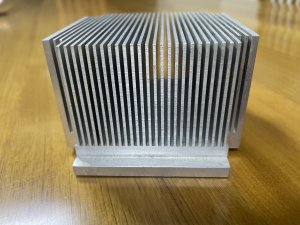
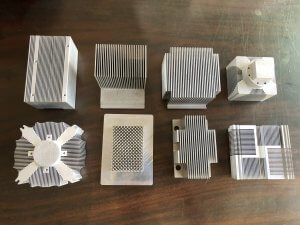
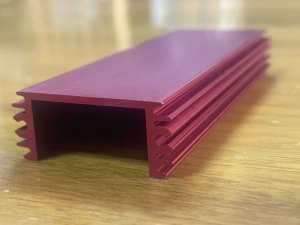
contact us


